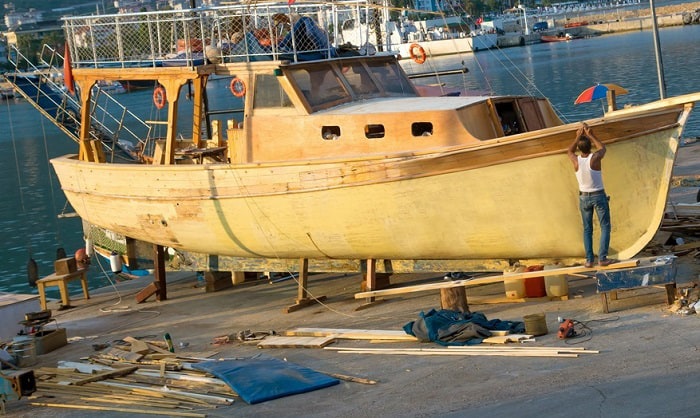Beyond the Blueprint: Unveiling Hidden Gems in Plywood Boat Building
Building a boat from plywood is a rewarding challenge, a testament to human ingenuity and craftsmanship. While many guides focus on the "how-to," Building Your First Plywood Boat: Plans and Instructions (let's call it BYFPB) often leaves unexplored territories ripe for innovation and deeper understanding. This review delves into those uncharted waters, addressing questions rarely discussed and offering fresh perspectives for both novice and experienced builders.
The Unsung Hero: Material Selection Beyond the Spec Sheet
BYFPB, like most guides, provides material specifications. But what about the subtle variations within those specs? How does the specific source of your plywood â€" its origin, the type of glue used in its construction â€" impact the final product's performance and longevity?
Q: How can I go beyond the basic plywood recommendations in BYFPB?
A: Research the plywood's manufacturing process. Consider using sustainably harvested wood certified by the Forest Stewardship Council (FSC). Explore different marine-grade plywood types and their water resistance properties. Consider contacting plywood suppliers directly; they may provide detailed information about the resin systems and manufacturing techniques used, allowing you to choose a material best suited to your project's needs and environmental priorities. This information might not be available in standard datasheets.
Beyond the Plans: Engineering Your Dream (Safely!)
BYFPB provides plans, but those plans are a starting point. What if you wanted to adapt them? What about incorporating modern engineering principles for a stronger, more efficient design? The book touches on safety but seldom digs into the advanced nuances.
Q: How can I ensure the structural integrity of my plywood boat beyond simply following the provided plans?
A: Consider using Finite Element Analysis (FEA) software (many free options are available). This allows you to virtually test your boat's design under stress, identifying potential weak points before you even cut the first piece of wood. Furthermore, explore advanced joinery techniques beyond what's shown in the book. Research scarf joints, for example, for stronger, more seamless connections in longer structural members. Consult online resources dedicated to boat building and structural engineering for further insights.
The Unexpected Challenges: Lessons Learned from Real-World Projects
Let's face it: building a boat rarely goes exactly according to plan. Real-world experiences often reveal hidden challenges that books don’t always anticipate.
Story 1: The Case of the Warped Plywood
One builder, let's call him Mark, followed BYFPB meticulously. However, he experienced unexpected warping in his plywood sheets during the construction process due to inconsistent storage conditions before starting. He learned the hard way about the importance of proper acclimatization of the plywood to the environment and the use of moisture meters.
Story 2: The Unexpected Cost of "Small" Mistakes
Another builder, Sarah, made a seemingly insignificant error in measuring a critical component. The consequences? A misalignment that required extensive rework, adding significant time and frustration to the project. This highlights the importance of meticulous planning and double-checking measurements throughout the process.
Q: How can I mitigate the unforeseen challenges?
A: Document every step. Take thorough pictures and notes. Join online boat-building communities to share your progress and troubleshoot problems. Don't be afraid to ask for help from experienced builders. Embrace the iterative process â€" learning from mistakes is an integral part of the journey.
In conclusion, while Building Your First Plywood Boat: Plans and Instructions offers a solid foundation, a deeper dive into material science, engineering principles, and the potential pitfalls revealed through real-world experiences enriches the process immeasurably. By embracing a spirit of inquiry and leveraging available resources, you can not only build a boat, but cultivate a profound understanding of craftsmanship and the art of boat building itself.














